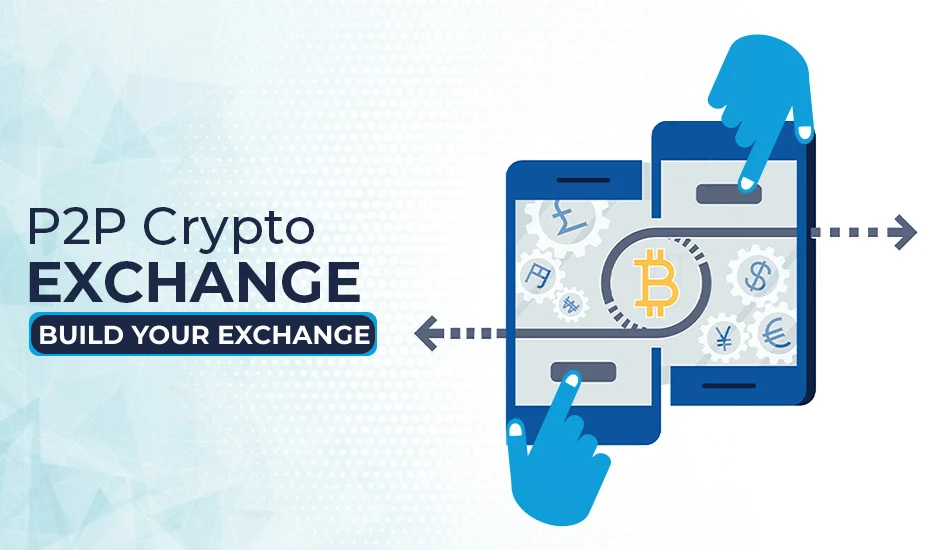In the ever-evolving landscape of cryptocurrency, Peer-to-Peer (P2P) exchange development has emerged as a dynamic force, reshaping the way individuals trade digital assets. This comprehensive guide explores the intricacies of P2P exchange development, unraveling the key components, benefits, challenges, and the rising influence of decentralized transactions.
Table of Contents
Understanding P2P Exchange Development
P2P exchange development revolves around creating platforms that facilitate direct transactions between users, eliminating the need for intermediaries like traditional banks. The decentralized nature of P2P exchanges aligns with the core principles of cryptocurrencies, emphasizing privacy, security, and peer-driven transactions. As the cryptocurrency market continues to mature, P2P exchanges have gained traction, offering a viable alternative to centralized platforms.
The Key Components of P2P Exchange Development
- Smart Contract Integration:
At the heart of P2P exchange development lies the implementation of smart contracts. These self-executing contracts automate and secure transactions, ensuring that funds are released only when predefined conditions are met. Smart contracts provide a trustless environment, mitigating the risks associated with centralized control. - Escrow Services:
To enhance trust and security, P2P exchanges often incorporate escrow services. These act as intermediaries, holding the digital assets being traded until both parties fulfill their obligations. Escrow services mitigate the risk of fraudulent activities, creating a secure environment for users. - Multi-Signature Wallets:
The integration of multi-signature wallets adds an extra layer of security to P2P exchanges. These wallets require multiple private keys to authorize a transaction, reducing the risk of unauthorized access or malicious activities. Multi-signature wallets enhance the overall safety of user funds.
The Benefits of P2P Exchange Development
- Decentralization and Security:
P2P exchanges operate without a central authority, distributing control among users. This decentralized model enhances security by eliminating a single point of failure. Users have greater control over their funds and transactions, reducing the risk of hacking or manipulation. - Privacy and Anonymity:
P2P exchanges prioritize user privacy and anonymity. Participants can engage in transactions without the need to disclose sensitive information, providing a level of privacy that may not be achievable on centralized platforms. - Global Accessibility:
P2P exchanges transcend geographical boundaries, allowing users from different parts of the world to trade seamlessly. This global accessibility fosters financial inclusion, enabling individuals in underserved regions to participate in the cryptocurrency market.
Challenges in P2P Exchange Development
- Liquidity Challenges:
P2P exchanges may face liquidity challenges, especially in markets with lower user adoption. Limited liquidity can impact the execution of trades and result in price slippage. - Regulatory Uncertainty:
Navigating the regulatory landscape remains a challenge for P2P exchanges. The lack of clear guidelines in some jurisdictions can lead to legal uncertainties and compliance issues. - User Education:
As P2P exchanges gain popularity, user education becomes crucial. Participants need to understand the nuances of decentralized transactions, including the proper use of smart contracts and the importance of securing private keys.
The Rising Influence of P2P Exchange Development in 2024
- Increasing User Adoption:
With growing awareness of the benefits of decentralized finance (DeFi), more users are turning to P2P exchanges. The user-friendly interfaces and enhanced security features are contributing to increased adoption. - Integration of Stablecoins:
The integration of stablecoins within P2P exchanges is becoming more prevalent. Stablecoins provide a hedge against the volatility of traditional cryptocurrencies, offering users a more stable medium of exchange. - Diversification of Assets:
P2P exchanges are expanding beyond traditional cryptocurrencies, allowing users to trade a variety of digital assets, including NFTs, tokenized securities, and decentralized finance (DeFi) assets.
The Future Outlook of P2P Exchange Development
As we look to the future, P2P exchange development is poised to play a pivotal role in shaping the cryptocurrency landscape. The continued emphasis on decentralization, security, and user empowerment positions P2P exchanges as a compelling alternative to centralized counterparts. The integration of emerging technologies, such as blockchain interoperability and Layer 2 scaling solutions, will further enhance the efficiency and scalability of P2P exchanges.
Conclusion
In the dynamic realm of cryptocurrency, P2P exchange development stands out as a transformative force, aligning with the principles of decentralization and user empowerment. The rise of P2P exchanges in 2024 reflects a shift towards more secure, private, and inclusive trading platforms. As the industry continues to innovate, P2P exchanges are expected to play a central role in shaping the future of decentralized finance. Embracing the evolution of P2P exchange development is not just a response to current market trends but a strategic move towards a more resilient and user-centric financial ecosystem.

